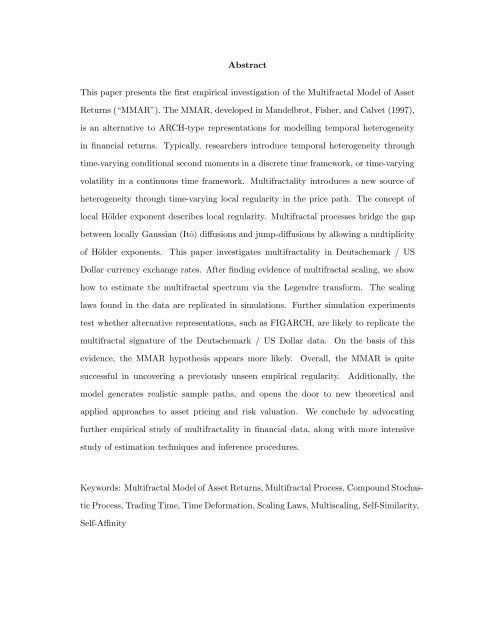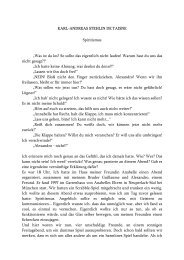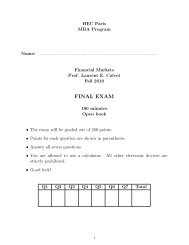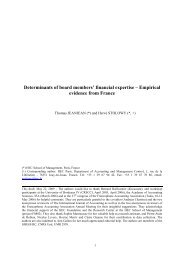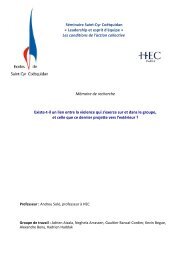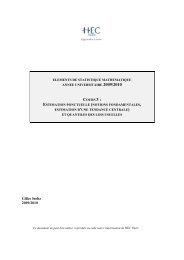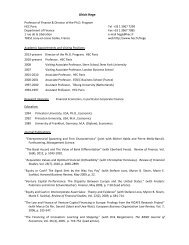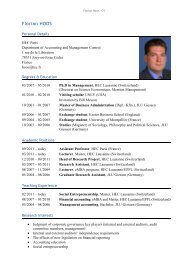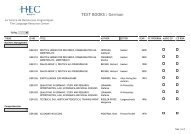Multifractality of US Dollar/Deutsche Mark Exchange Rates - Studies2
Multifractality of US Dollar/Deutsche Mark Exchange Rates - Studies2
Multifractality of US Dollar/Deutsche Mark Exchange Rates - Studies2
Create successful ePaper yourself
Turn your PDF publications into a flip-book with our unique Google optimized e-Paper software.
Abstract<br />
This paper presents the first empirical investigation <strong>of</strong> the Multifractal Model <strong>of</strong> Asset<br />
Returns (“MMAR”). The MMAR, developed in Mandelbrot, Fisher, and Calvet (1997),<br />
is an alternative to ARCH-type representations for modelling temporal heterogeneity<br />
in financial returns. Typically, researchers introduce temporal heterogeneity through<br />
time-varying conditional second moments in a discrete time framework, or time-varying<br />
volatility in a continuous time framework. <strong>Multifractality</strong> introduces a new source <strong>of</strong><br />
heterogeneity through time-varying local regularity in the price path. The concept <strong>of</strong><br />
local Hölder exponent describes local regularity. Multifractal processes bridge the gap<br />
between locally Gaussian (Itô) diffusions and jump-diffusions by allowing a multiplicity<br />
<strong>of</strong> Hölder exponents. This paper investigates multifractality in <strong>Deutsche</strong>mark / <strong>US</strong><br />
<strong>Dollar</strong> currency exchange rates. After finding evidence <strong>of</strong> multifractal scaling, we show<br />
how to estimate the multifractal spectrum via the Legendre transform. The scaling<br />
laws found in the data are replicated in simulations. Further simulation experiments<br />
test whether alternative representations, such as FIGARCH, are likely to replicate the<br />
multifractal signature <strong>of</strong> the <strong>Deutsche</strong>mark / <strong>US</strong> <strong>Dollar</strong> data. On the basis <strong>of</strong> this<br />
evidence, the MMAR hypothesis appears more likely. Overall, the MMAR is quite<br />
successful in uncovering a previously unseen empirical regularity. Additionally, the<br />
model generates realistic sample paths, and opens the door to new theoretical and<br />
applied approaches to asset pricing and risk valuation. We conclude by advocating<br />
further empirical study <strong>of</strong> multifractality in financial data, along with more intensive<br />
study <strong>of</strong> estimation techniques and inference procedures.<br />
Keywords: Multifractal Model <strong>of</strong> Asset Returns, Multifractal Process, Compound Stochas-<br />
tic Process, Trading Time, Time Deformation, Scaling Laws, Multiscaling, Self-Similarity,<br />
Self-Affinity


